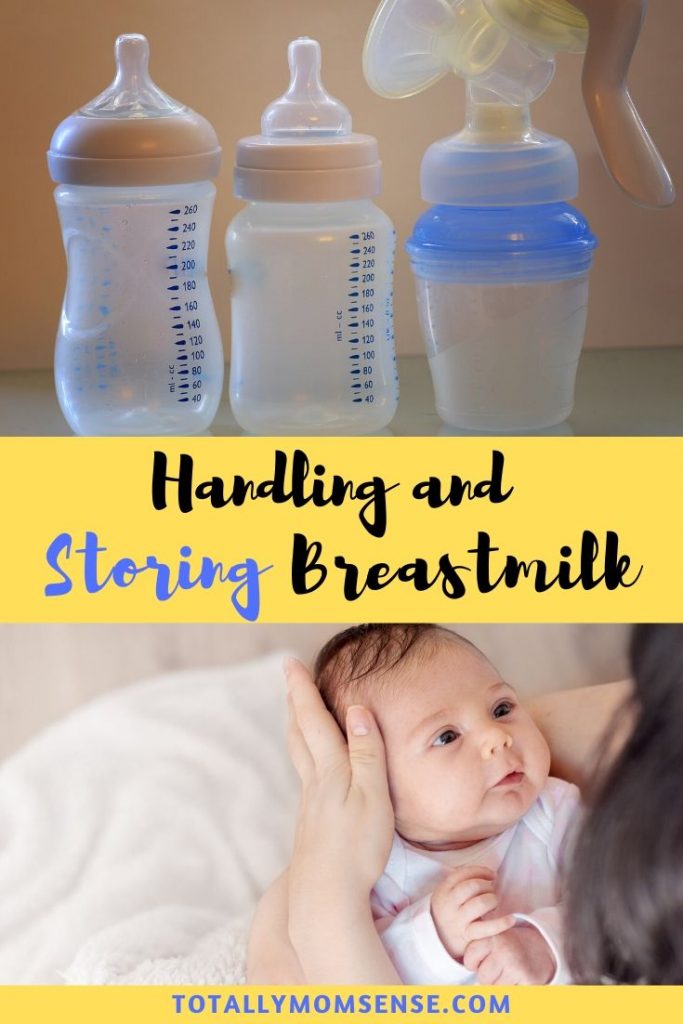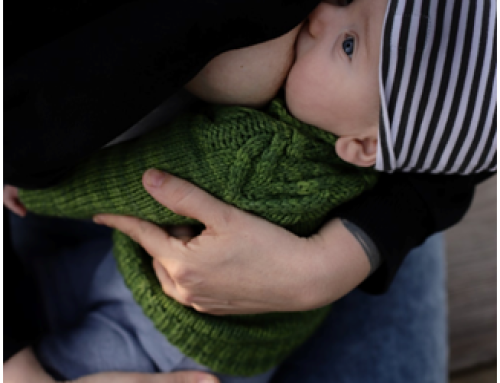Breastmilk is the best food for your babies. In this post, you will find effective and valuable tips and insights on storing and handling the pumped breastmilk in the best possible way.
As a new mom with a lot of things going on around you, pumping and storing breastmilk might feel overwhelming at times. I remember when I was breastfeeding my daughter and had to return to work after my maternity leave and still keep nursing, it felt extremely stressful on how I would be able to manage all this together. The reason for my concern was my lack of knowledge on how to store and handle breastmilk and to get rid of this queasy feeling, I did what I do best, dive into the topic and research it all. Honestly, it was no rocket science!
All you must keep in mind are a few guidelines when it comes to pumping and storing the breastmilk. And in this blog post, I am going to show you exactly all the required tips and tricks on breastmilk storage that you would require to get started on your breastfeeding journey and ace it like a champ! So, let’s do it.
Pin this post to keep it handy all the time

Before going forward into the post, I would like to introduce you all to the Ultimate back to work pumping class by Milkology. This course is packed with valuable insights on day to day pumping and tips on successfully transitioning back to work. I had taken the other Ultimate breastfeeding class again by Milkology at the start of my breastfeeding journey and had found it extremely useful. You can take these courses from the comfort of your home as it’s online and it is packed with the necessary and all the required information that you would require to get started on your breastfeeding journey. And the best part is that they are only for $19.
FORMS OF BREASTMILK
To start with, you can handle breastmilk in three forms. They are the freshly expressed milk, refrigerated milk, and frozen milk. In this post, we will go over each form of milk storage in detail, their important guidelines and what you can expect from them.
FRESHLY EXPRESSED MILK
This form of milk is when you have pumped fresh breastmilk to feed your baby. Freshly expressed milk can be used for feeding right away or it can be kept at room temperature i.e.., 61-71F for up to 4 to 8 hours. Although at cooler room temperatures you can keep the milk outside for up to 8 hours, usually 4 hours is preferred.
With my daughter especially during the nighttime feeding, to get away from warming a bottle of milk, I would pump a bottle before my bedtime and keep it at my nightstand. And when my daughter would wake up in the middle of the night, I would give her the milk bottle. This worked really well for me as it did not break her sleep and it was also so convenient. In case if we overslept and missed our 4-6 hours breastfeeding window then I would just toss the milk in the garbage. It is best to either refrigerate or freeze a freshly expressed milk right away and not let it sit out if you want to refrigerate or freeze it.
Related: All the must-haves to set up a breastfeeding station at home
REFRIGERATED MILK
You can refrigerate a freshly expressed milk in a standard refrigerator at your home for up to 3 – 8 days. Although 3 days or less is the preferred number. And if you are refrigerating the milk in an insulated cooler with ice packs, you can store the milk for up to 24 hours.
When I was pumping at work, I would carry an insulated cooler like this one with ice packs in it. I would fill the milk bottles with my freshly expressed milk and leave it in my office for up 8–10 hours. Once I got back home, I would either refrigerate it (if I need the same milk in the coming 2-3 days) or freeze it for later. Also, you can buy this mini freezer from amazon that you can keep at your place of work or in your bedroom if needed.
Related: How I organized my pump bag for work
Don’t be concerned about the cream in the milk bottles that are stored in your refrigerator to separate out and float at the top. You can either swirl the bottle slowly for the milk to mix or I found that warming the milk bottle in the bottle warmer also did a great job. Also, it is recommended to never shake the milk bottle as it can affect the overall quality of your milk.
HOW DO I WARM A COLD BREASTMILK BOTTLE?
To warm your breastmilk, you can either place the breastmilk bottle or milk bag in a bowl of warm water for a few minutes, approx. around 2-3 minutes. Make sure to keep checking the milk by testing a few drops on your wrist so that you don’t overheat the milk which can be a very tricky situation if your baby is very hungry. Also never microwave your breast milk as it is known to produce hot spots that can burn your little one’s mouth and also reduce its overall nutrient content.
Another method to warm the breastmilk is to use a bottle warmer. While looking for a bottle warmer I wanted something that was universally designed to fit multiple brands of bottles so that if I have to change the milk bottle for my baby girl in the near future I would not have to purchase a new warmer. I found that the Avent bottle warmer suited to the best of my needs. It’s easy to use and compact in size. Although it is only designed to warm a four-ounce milk bottle, I am able to warm my eight-ounce bottle as well using the same warmer.
Did you know that you can get a breast pump for free from your insurance? All you have to do is simply fill out this form at Aeroflow, and they will contact you. Aeroflow has a variety of breast pumps to choose from and they will help you with all the details on how to avail your breast pump for free from your insurance.
Get your free breast pump here!
FROZEN MILK
Freshly expressed milk should always be immediately transferred in milk storage bags or bottles and then placed in the freezer. A packet of frozen breastmilk can last anywhere between 6-12 months (although 6 months is preferred). Another great way to organize milk in the freezer is by using these milkies storage systems.
Another thing to always remember while handling refrigerated or frozen milk is to always date and time your packets with a black marker. You can also use these labels to stick on your milk bottles and then write on them with a black marker.
STORING FROZEN MILK IN THE FREEZER
From my experience, I had learned that storing breastmilk in the1-4 oz packets was very useful. Sometimes I would already have some milk left and to complete a feed I would just need 1-2 oz. Then thawing the right amount and mixing it with the previous milk would help me make the best use of the breastmilk without wasting it.
Related: 20 Breastfeeding hacks for new moms
THAWING FROZEN BREASTMILK
Frozen breastmilk can be thawed at room temperature for any time up to 1-2 hours. The easiest way to thaw at room temperature is to place the frozen packet or bottle in a bowl of warm water and let in sit for some time. Also, if you happen to notice leaks in your frozen packet transfer the packet as it is in a zip log plastic bag and then place the plastic Ziploc bag in the bowl of warm water. You can store thawed milk in the refrigerator for up to 24hours from the time it has been thawed. Make sure to keep the leakage bag in a bag to prevent the breastmilk from wasting away.
Another way to thaw the breastmilk is to leave the frozen breastmilk bag in the refrigerator overnight and use it the next day. It is recommended to never freeze the thawed milk. The bad thing about this is that if the thawed milk is not used within a day then you need to throw it away.
Also, another important thing to keep in mind is, that if your baby starts to reject your breastmilk you need to check for excessive lipase condition. Lipase is an enzyme found in a few mom’s breastmilk that converts the breast milk in a sour or soapy taste. Although it sounds concerning, there are a few ways that you can work around this and still feed your little one your breastmilk.
CAN YOU MIX FRESHLY EXPRESSED MILK TO THE REFRIGERATED OR FROZEN MILK?
Yes, you can add the freshly expressed milk to the refrigerated or frozen milk expressed earlier. However, thoroughly cool the freshly expressed breast milk in the refrigerator or a cooler with ice packs before adding it to the previously chill milk or frozen milk. Adding body temperature or warm milk to the refrigerated milk will make it more susceptible to bacteria and if added to the frozen milk, it will partially thaw the milk.
WHICH BREASTMILK STORAGE METHOD IS BETTER?
Although any form of breastmilk is beneficial for your babies as it is packed with the best nutrients, vitamins and etc. that your little one needs. But freshly expressed milk is preferable to refrigerate and refrigerated is better than frozen. This is because the freshly expressed milk has the best vitamins and fats and is also higher in anti-oxidants and bacterial fighting properties than the refrigerated or frozen milk. Anyhow the most important thing to remember is whatever form of breastmilk you go for, it is is the best food your baby that there is, so given to them in any form is beneficial for them.
I hope all these guidelines on handling and storing breastmilk were beneficial for you and you developed a good understanding of what to expect as a pumping nursing mom. Enjoy your breastfeeding journey! These are some of the best moments with your little one and you will always cherish it in the time to come.












Leave A Comment